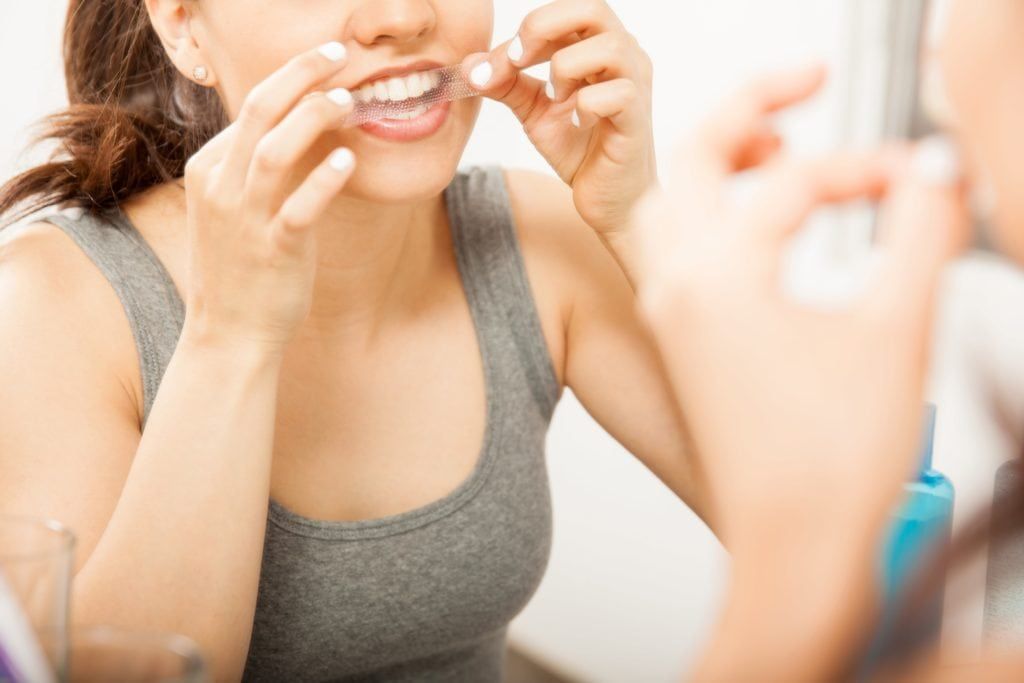Nowadays, there are a large variety of teeth whitening products that are intended for use in the comfort and safety of your own home. But with so many options available, how do you decide which method to use? Choosing the right method depends on the types of results you’re intending to get and the type of approach you’re willing to take.
Keep in mind that deciding to whiten your teeth at home is a different approach altogether from getting your teeth professionally whitened at the dentist. Professional teeth whitening uses stronger concentrations of whitening chemicals and yields immediate results. At-home whitening methods simply are not designed to have these same types of results. For starters, the chemicals are not as strong since they are not being applied by dental professionals, meaning it will take several more applications to achieve the desired results. Generally speaking, choosing to whiten your teeth at home means that you have decided to take a slower approach to whitening your teeth. With that being said, the following methods are available for teeth whitening at home:
Whitening Toothpastes:
Whitening toothpastes are ideal for removing surface stains and are easy to use because they don’t require any additional work outside of your usual brushing routine. While these are mostly useful to maintain a bright smile after a professional teeth cleaning, they can slightly whiten your teeth on their own. A few examples of good whitening toothpastes are: Jason Natural PowerSmile Antiplaque & Whitening Toothpaste, Opalescence Whitening Toothpaste, and, for sensitive teeth, Sensodyne True White Toothpaste.
Whitestrips:
Whitestrips are more effective than whitening toothpastes and can lighten your teeth approximately five shades. They contain hydrogen peroxide and are applied to your teeth for approximately thirty minutes at a time to lift stains. If you plan on using whitestrips, Crest 3D White Whitestrips uses enamel-safe ingredients and have been approved by the American Dental Association.
Whitening Pens:
Whitening pens offer a “portable” whitening approach that contains a high concentration of whitening gel and an easy application method. You simply “brush on” the whitening gel and leave it on your teeth for the required amount of time. Usually this is approximately 20-30 minutes either once or twice a day. Whitening pens are ideal because they contain a silicone rubber tip which allows the whitening gel to penetrate the enamel and whiten all the layers of your teeth. An ideal whitening pen is the Philips Sonicare Single Whitening Touch-Up Pen.
Whitening Trays:
Whitening trays are available both as over-the-counter treatments and as trays given to you by your dentist. The both work in a similar way, and use trays filled with bleaching gel to whiten your teeth. If you use whitening trays from your dentist, they will have a stronger concentration of bleaching gel and the trays will be custom fitted to your teeth. If you use an over-the-counter whitening tray kit, then the whitening gel will be of a lower concentration and the trays will either be one size fits all or have a bendable mouthpiece.

